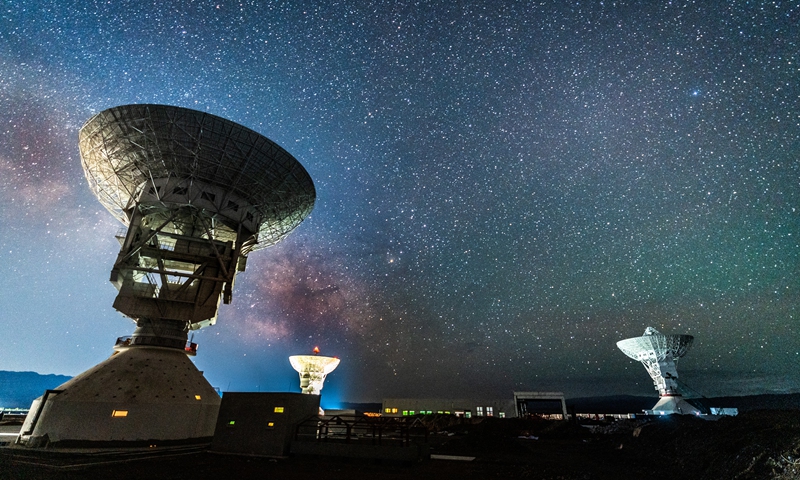Homegrown largest reflector antenna in Asia delivered, ready to receive data from Mars

The deep space antenna array system at a ground station in Kashi, Northwest China’s Xinjiang Uyghur Autonomous Region Photo: Xi'an Satellite Control Center
The China-developed 70-meter diameter reflector antenna, the largest in Asia, completed acceptance checks on Thursday and is ready to be put to use for the country’s first Mars mission, Tianwen-1, which is approaching the Red Planet and is expected to enter its gravity soon.
The antenna, specifically designed for the Mars exploration project, is tasked with receiving data from Tianwen-1 some 400 million kilometers away from Earth, playing a crucial role in the mission, experts noted.
The high-performance antenna, which was delivered to the National Astronomical Observatories of the Chinese Academy of Sciences, is 72 meters in height and weighs 2,700 tons. Composed of 1,328 high-precision panels, it is about the size of 10 basketball courts, and its main reflector’s diameter is as wide as 70 meters, CCTV News reported.
The existing ones have diameters of between 35 meters and 50 meters, but the massive distance between Earth and Mars means that they are not big enough to meet the requirements for data collection.
As a result, Chinese scientists have designed a telescope with an even larger antenna that will work with the other three existing ones in Beijing and Kunming in Southwest China’s Yunnan Province, to receive signals from Mars.
Tianwen-1 is now speeding towards its destination at a distance of 170 million kilometers away from Earth. It is expected to arrive in the gravitational field of the Red Planet, carry out a braking maneuver and enter the Mars orbit around February 10, a day before Chinese New Year’s Eve.
Various payloads onboard the spacecraft will be turned on one after another and return data, which means that that the “busiest working hours” have come for the antenna, Wang Yanan, chief editor of Beijing-based Aerospace Knowledge magazine, told the Global Times on Thursday.
The ability to receive this data is crucial to the success of China’s first Mars exploration mission, Li Chunlai, a deputy chief designer of the project said. “To put it more vividly, sending back data is like shining a laser pointer on the probe at the Earth,” CCTV News described.
As the transmission distance increases, the signal, originally a point at the probe’s end, becomes a circular surface amplified many times by the time it reaches Earth, while the density of the signal is also diluted, Li explained.
“In addition to the size of the antenna, another important factor is the accuracy in detecting signal direction,” Wang added. If the antenna fails to adjust its angle towards the source of direction, then it cannot receive data.
